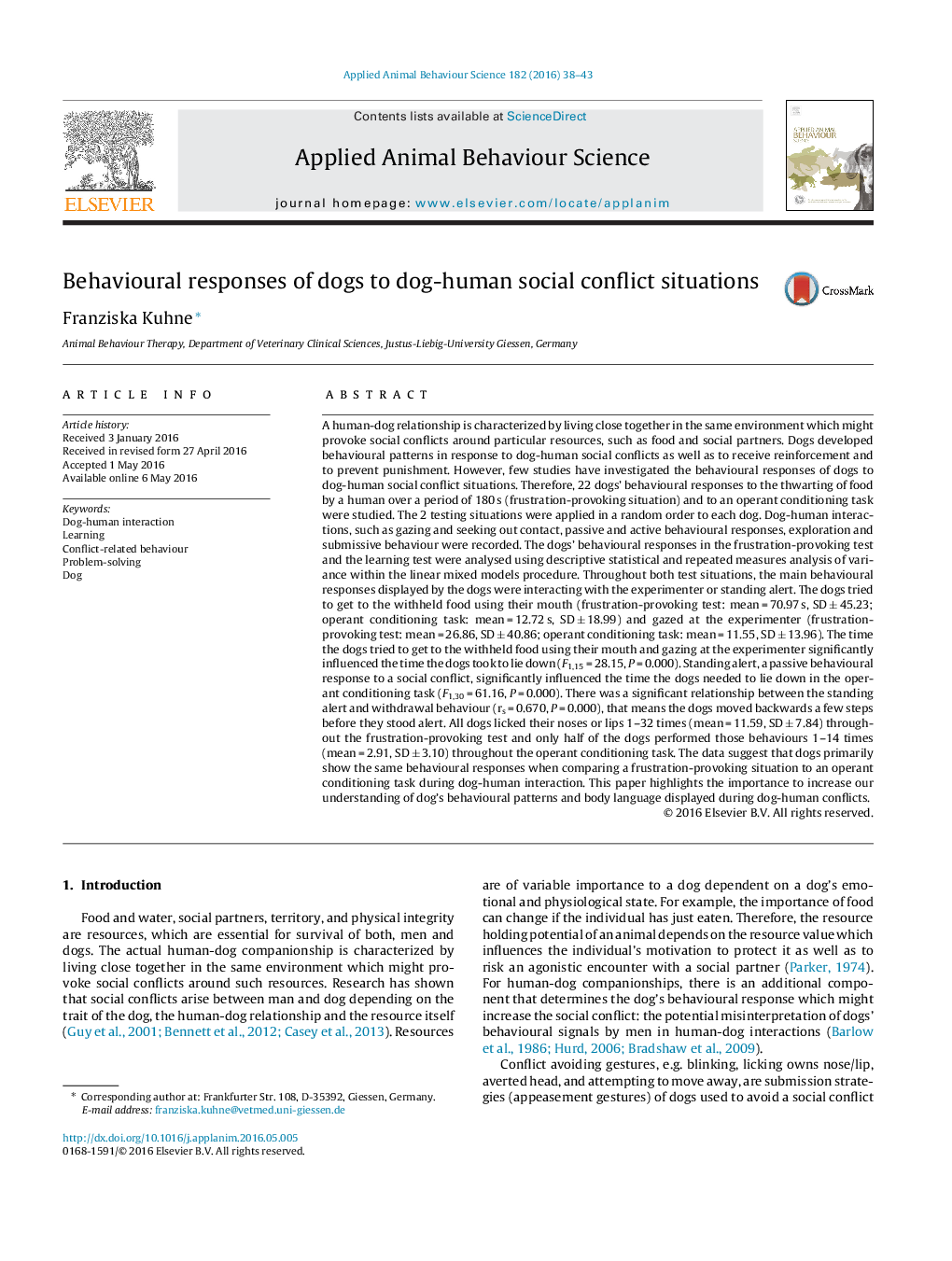| کد مقاله | کد نشریه | سال انتشار | مقاله انگلیسی | نسخه تمام متن |
|---|---|---|---|---|
| 4522333 | 1625324 | 2016 | 6 صفحه PDF | دانلود رایگان |
• Dogs were confronted with different human-dog social conflict situation.
• Interactions with the experimenter and owner, passive and active behavioural responses, exploration and submissive behaviour were observed.
• The dogs mainly interacted with the experimenter and stood alert.
• Passive and active behavioural responses as well as submissive behaviour occurred less often as the dogs could solve the social conflict situation.
A human-dog relationship is characterized by living close together in the same environment which might provoke social conflicts around particular resources, such as food and social partners. Dogs developed behavioural patterns in response to dog-human social conflicts as well as to receive reinforcement and to prevent punishment. However, few studies have investigated the behavioural responses of dogs to dog-human social conflict situations. Therefore, 22 dogs’ behavioural responses to the thwarting of food by a human over a period of 180 s (frustration-provoking situation) and to an operant conditioning task were studied. The 2 testing situations were applied in a random order to each dog. Dog-human interactions, such as gazing and seeking out contact, passive and active behavioural responses, exploration and submissive behaviour were recorded. The dogs’ behavioural responses in the frustration-provoking test and the learning test were analysed using descriptive statistical and repeated measures analysis of variance within the linear mixed models procedure. Throughout both test situations, the main behavioural responses displayed by the dogs were interacting with the experimenter or standing alert. The dogs tried to get to the withheld food using their mouth (frustration-provoking test: mean = 70.97 s, SD ± 45.23; operant conditioning task: mean = 12.72 s, SD ± 18.99) and gazed at the experimenter (frustration-provoking test: mean = 26.86, SD ± 40.86; operant conditioning task: mean = 11.55, SD ± 13.96). The time the dogs tried to get to the withheld food using their mouth and gazing at the experimenter significantly influenced the time the dogs took to lie down (F1,15 = 28.15, P = 0.000). Standing alert, a passive behavioural response to a social conflict, significantly influenced the time the dogs needed to lie down in the operant conditioning task (F1,30 = 61.16, P = 0.000). There was a significant relationship between the standing alert and withdrawal behaviour (rs = 0.670, P = 0.000), that means the dogs moved backwards a few steps before they stood alert. All dogs licked their noses or lips 1–32 times (mean = 11.59, SD ± 7.84) throughout the frustration-provoking test and only half of the dogs performed those behaviours 1–14 times (mean = 2.91, SD ± 3.10) throughout the operant conditioning task. The data suggest that dogs primarily show the same behavioural responses when comparing a frustration-provoking situation to an operant conditioning task during dog-human interaction. This paper highlights the importance to increase our understanding of dog’s behavioural patterns and body language displayed during dog-human conflicts.
Journal: Applied Animal Behaviour Science - Volume 182, September 2016, Pages 38–43
